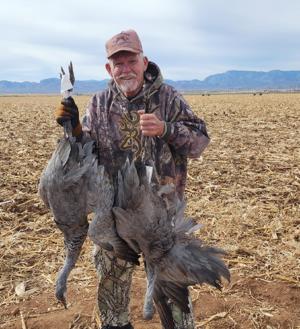Every winter, Arizona becomes a temporary home for the majestic Sandhill Cranes, a large bird species known for its impressive migration journey. These birds travel thousands of miles from their breeding grounds, primarily in Alaska and as far away as Siberia, Russia, to enjoy the warmer climate of the southwestern United States. Their annual arrival not only signifies the changing seasons but also offers unique opportunities for sportsmen and birdwatchers alike.
Unlike other migratory birds, Sandhill Cranes are not classified as waterfowl by the US Fish and Wildlife Service. This distinction has significant implications for hunters. Those fortunate enough to secure a permit through the Arizona Game & Fish Department can hunt these large birds using various types of ammunition, including lead shot.
Permit Details and Hunting Regulations
Sandhill Cranes can weigh up to 10 pounds, stand approximately four feet tall, and possess a remarkable wingspan of over six feet. The regulations surrounding their hunting in Arizona allow for the use of shotguns that are no larger than 10 gauge. The permits, which are issued by the state’s wildlife agency, are highly sought after due to the unique experience of hunting these stately birds.
The hunting season typically runs from late November through February, coinciding with the cranes’ migration pattern. Bird enthusiasts often flock to Arizona during this period, not only to hunt but also to observe the cranes in their natural habitat. The annual spectacle of their migration draws attention from both seasoned sportsmen and families looking to appreciate nature.
In addition to the thrill of the hunt, the presence of Sandhill Cranes supports local economies. Wildlife tourism, particularly during the winter months, provides an economic boost to Arizona’s rural communities. Local businesses, including hotels, restaurants, and guiding services, benefit from the influx of visitors eager to witness the cranes in action.
As the cranes fill the skies, their trumpeting calls resonate across the Arizona landscape, captivating those who hear them. The experience of hunting or observing these magnificent birds is a reminder of the rich natural heritage the state has to offer.
In conclusion, the annual migration of Sandhill Cranes presents both a challenge and an opportunity for hunters in Arizona. With the right permits and knowledge of the regulations, sportsmen can engage in a unique hunting experience while contributing to the local economy and enjoying the beauty of nature.



































































